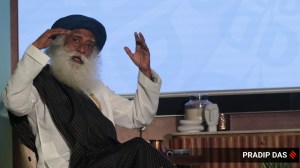ICC’s new rain-rule will favour high-scoring team
Though most Indians would like to forget the 2003 ICC World Cup final, there was a stage when India were 12 runs and a heavy shower away fro...

Though most Indians would like to forget the 2003 ICC World Cup final, there was a stage when India were 12 runs and a heavy shower away from winning the match. To prevent such a travesty of justice actually taking place, the International Cricket Council is implementing this week the new, improved (and even more complicated) version of the Duckworth-Lewis Method.
The D-L Method, equally praised and reviled, has been awhile in the process of change, as first reported in The Indian Express. The main benefit of the change will fall to teams batting first and scoring a huge total (as the Australians did in the 2003 WC final).
|
D-L FOR DUMMIES
|
||
|
• Why the change?: Flaw in Old D-L was team chasing mammoth total and getting off to a quick start could win the match at halfway stage. More realistic target necessary • What has changed? The equation for a team chasing huge total. Old D-L had a single table of resource percentages to work out targets; now a computer needs to be used for different matches |
Under the old D-L, a chasing team could benefit from rain stopping play if it had posted a large total on the board by then; New D-L takes into account the fact that teams chasing huge targets usually get off to a brisk start before running out of wickets and overs (‘resources’, in D-L parlance) and weights the run-rates accordingly.
At one stage in the final, the Indians — chasing Australia’s 359 — were 145/3 in the 23rd over, only four runs behind par.
Had the rain stopped play two overs later (D-L comes into effect after 25 overs) and India scored 12 runs in those 12 balls without losing another wicket, India would have won.
It didn’t happen, of course, but underlined the flaw in D-L.
‘‘We have been aware of this problem for the past six-odd years,’’ Frank Duckworth told The Indian Express today.
‘‘After the World Cup final, we sent a report to the ICC saying that a more complex system is necessary. In their Cricket Committee meeting this May, the ICC gave us the go-ahead.’’
Calculations under the new system (a change the ICC likens to an upgraded version of Windows), Duckworth says, are far more complicated. ‘‘Where earlier we could solve everything with a single table of resource percentages, now it will be different for every match. The effect will be felt in high-scoring matches; targets for low-scoring matches will remain the same as now.’’
However, good news for statisticians and team captains is that D&L feel there are no more anomalies to iron out.
‘‘We have dealt with anomalies from time to time and as far as we are concerned, this revision deals with lots of anomalies’’, Duckworth said.
ICC spokesman Brendan McClements said the new method — which the Council feels to be more ‘‘robust’’ — will be introduced on Friday, for the first ODI between Pakistan and South Africa in Lahore. It will then be applicable for all future matches.
Photos


- 01
- 02
- 03
- 04
- 05





























